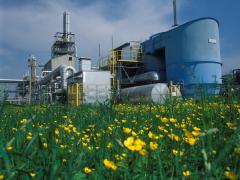Good practice policies to bridge the emissions gap in key countries
One key aspect of the Paris Agreement is the goal to limit the global average temperature increase to well below 2 °C by the end of the century. To achieve the Paris Agreement goals, countries need to submit, and periodically update, their Nationally Determined Contributions (NDCs). Recent studies show that NDCs and currently implemented national policies are not sufficient to cover the ambition level of the temperature limit agreed upon in the Paris Agreement, meaning that we need to collectively increase climate action to stabilize global warming at levels considered safe.
This paper explores the generalization of previously adopted good practice policies (GPPs) to bridge the emissions gap between current policies, NDCs ambitions and a well below 2 °C world, facilitating the creation of a bridge trajectory in key major-emitting countries. These GPPs are implemented in eleven well-established national Integrated Assessment Models (IAMs) for Australia, Brazil, Canada, China, European Union (EU), India, Indonesia, Japan, Russia, South Korea, and the United States, that provide least-cost, low-carbon scenarios up to 2050.
Results show that GPPs can play an important role in each region, with energy supply policies appearing as one of the biggest contributors to the reduction of carbon emissions. However, GPPs by themselves are not enough to close the emission gap, and as such more will be needed in these economies to collectively increase climate action to stabilize global warming at levels considered safe.
This article is available on the publisher’s website via restricted access.
Authors
Specifications
- Publication title
- Good practice policies to bridge the emissions gap in key countries
- Publication date
- 16 January 2022
- Publication type
- Article
- Publication language
- English
- Magazine
- Global Environmental Change
- Issue
- Volume 73, March 2022, 102472
- Product number
- 4906




